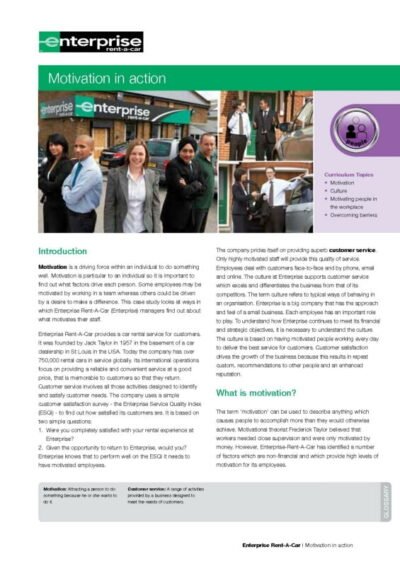Strategic workforce planning is a systematic approach that organisations employ to ensure they have the right number of people, with the right skills, in the right roles, at the right time. This process is not merely a reactive measure to fill vacancies as they arise; rather, it is a proactive strategy that aligns workforce capabilities with the long-term goals of the organisation. In an increasingly competitive and dynamic business environment, where technological advancements and market demands are in constant flux, strategic workforce planning has emerged as a critical function for organisations aiming to maintain a competitive edge.
The essence of strategic workforce planning lies in its ability to forecast future workforce needs based on various factors, including business objectives, demographic trends, and economic conditions. By analysing these elements, organisations can identify potential skill gaps and develop strategies to address them. This forward-thinking approach not only enhances operational efficiency but also fosters a culture of agility and adaptability within the workforce.
As businesses navigate through complexities such as digital transformation and globalisation, the importance of strategic workforce planning becomes ever more pronounced.
Summary
- Strategic workforce planning is essential for aligning an organisation’s workforce with its business goals and objectives.
- Benefits of strategic workforce planning include improved employee retention, better talent management, and increased organisational agility.
- Key components of strategic workforce planning include workforce analysis, forecasting, and developing talent strategies.
- HR plays a crucial role in strategic workforce planning by providing data-driven insights, identifying skill gaps, and implementing talent development initiatives.
- Challenges of strategic workforce planning include data accuracy, changing business needs, and resistance to change, but best practices can help overcome these challenges.
Benefits of Strategic Workforce Planning
The advantages of strategic workforce planning are manifold, significantly impacting both organisational performance and employee satisfaction. One of the primary benefits is the ability to anticipate and mitigate talent shortages. By forecasting future workforce needs, organisations can proactively recruit and develop talent, ensuring that they are not caught off guard by sudden changes in demand or skill requirements.
This foresight allows companies to maintain productivity levels and avoid the costly consequences associated with understaffing or hiring unqualified personnel. Moreover, strategic workforce planning enhances employee engagement and retention. When organisations invest in understanding their workforce’s skills and aspirations, they can create tailored development programmes that align with both individual career goals and organisational needs.
This alignment fosters a sense of belonging and purpose among employees, which is crucial for retention in an era where job-hopping has become commonplace. Additionally, by promoting internal mobility and career progression, organisations can cultivate a more skilled and versatile workforce, ultimately leading to improved performance and innovation.
Key Components of Strategic Workforce Planning
Several key components underpin effective strategic workforce planning. Firstly, data analysis plays a pivotal role in understanding current workforce capabilities and predicting future needs. Organisations must gather and analyse data related to employee skills, performance metrics, turnover rates, and market trends.
This data-driven approach enables leaders to make informed decisions about recruitment, training, and development initiatives. Another essential component is scenario planning. This involves creating various potential future scenarios based on different variables such as economic shifts, technological advancements, or changes in consumer behaviour.
By exploring these scenarios, organisations can develop flexible strategies that allow them to adapt quickly to changing circumstances. Furthermore, stakeholder engagement is crucial; involving leaders from various departments ensures that the workforce plan aligns with broader organisational goals and that all perspectives are considered.
The Role of HR in Strategic Workforce Planning
Human Resources (HR) plays a central role in the execution of strategic workforce planning. HR professionals are tasked with not only identifying current talent gaps but also forecasting future needs based on organisational strategy. They serve as the bridge between management’s vision and the workforce’s capabilities, ensuring that there is alignment between business objectives and human capital.
Additionally, HR is responsible for implementing training and development programmes that address identified skill gaps. By fostering a culture of continuous learning, HR can help employees acquire new competencies that are essential for future success. Furthermore, HR’s involvement in performance management systems ensures that employee contributions are recognised and rewarded, which is vital for maintaining motivation and engagement within the workforce.
Challenges of Strategic Workforce Planning
Despite its numerous benefits, strategic workforce planning is not without its challenges. One significant hurdle is the rapidly changing nature of work itself. The advent of automation, artificial intelligence, and remote working has transformed traditional job roles and required new skill sets.
As a result, organisations often struggle to keep pace with these changes while accurately predicting future workforce needs. Another challenge lies in data management. While data analysis is crucial for effective workforce planning, many organisations grapple with collecting, integrating, and interpreting vast amounts of data from disparate sources.
Inaccurate or incomplete data can lead to misguided decisions that may exacerbate existing talent shortages or misalign workforce capabilities with organisational goals. Additionally, resistance to change from employees or management can hinder the successful implementation of strategic workforce planning initiatives.
Best Practices for Strategic Workforce Planning
To navigate the complexities of strategic workforce planning effectively, organisations should adopt several best practices. Firstly, fostering a culture of collaboration across departments is essential. By involving various stakeholders in the planning process, organisations can gain diverse insights that enhance the accuracy of their forecasts and strategies.
Regular communication between HR, management, and employees ensures that everyone is aligned with the organisation’s goals and understands their role in achieving them. Secondly, leveraging technology can significantly enhance workforce planning efforts. Advanced analytics tools can provide real-time insights into workforce dynamics, enabling organisations to make data-driven decisions swiftly.
Additionally, implementing talent management systems can streamline recruitment processes and facilitate employee development initiatives. By harnessing technology effectively, organisations can improve their responsiveness to changing workforce needs.
Implementing Strategic Workforce Planning in an Organisation
The implementation of strategic workforce planning requires a structured approach that begins with a thorough assessment of current workforce capabilities. Organisations should conduct a skills inventory to identify existing competencies within their teams while also evaluating future needs based on business objectives. This assessment serves as the foundation for developing targeted recruitment and training strategies.
Once the assessment is complete, organisations should establish clear goals for their workforce planning initiatives. These goals should be specific, measurable, achievable, relevant, and time-bound (SMART). For instance, an organisation may aim to reduce turnover rates by 15% over the next year through enhanced employee engagement initiatives.
Regularly reviewing progress against these goals allows organisations to adjust their strategies as needed and ensures accountability throughout the process.
Conclusion and Future Trends in Strategic Workforce Planning
As we look towards the future of strategic workforce planning, several trends are likely to shape its evolution. The increasing integration of artificial intelligence and machine learning into HR processes will enable organisations to analyse vast amounts of data more efficiently and accurately predict future workforce needs. This technological advancement will facilitate more agile decision-making processes and enhance overall organisational responsiveness.
Moreover, as remote work becomes more entrenched in corporate culture, organisations will need to rethink their approaches to talent acquisition and management. Emphasising flexibility and work-life balance will be crucial for attracting top talent in a competitive market. Additionally, diversity and inclusion will continue to be at the forefront of strategic workforce planning efforts as organisations recognise the value of varied perspectives in driving innovation and performance.
In summary, strategic workforce planning is an essential function that enables organisations to align their human capital with their long-term objectives effectively. By embracing best practices and leveraging technology while addressing inherent challenges, businesses can create a resilient workforce capable of thriving in an ever-changing landscape.
Strategic Workforce Planning is crucial for businesses to ensure they have the right talent in place to achieve their long-term goals. A related article that provides insight into another aspect of business strategy is How do food delivery apps make money. This article explores the various revenue streams that food delivery apps utilise to generate profits and sustain their operations. Understanding these strategies can help businesses in the food industry make informed decisions about their own revenue models.
FAQs
What is Strategic Workforce Planning?
Strategic workforce planning is the process of aligning an organization’s workforce with its business goals and objectives. It involves analyzing the current workforce, identifying future workforce needs, and developing strategies to meet those needs.
Why is Strategic Workforce Planning important?
Strategic workforce planning is important because it helps organizations anticipate and prepare for future workforce challenges. It allows them to proactively address issues such as talent shortages, skills gaps, and changing business needs.
What are the key components of Strategic Workforce Planning?
The key components of strategic workforce planning include workforce analysis, forecasting future workforce needs, identifying critical roles and skills, developing talent strategies, and monitoring and adjusting the workforce plan as needed.
How does Strategic Workforce Planning benefit an organization?
Strategic workforce planning benefits an organization by helping it to better understand its current workforce capabilities, anticipate future talent needs, and develop strategies to attract, retain, and develop the right talent to meet its business objectives.
What are the challenges of Strategic Workforce Planning?
Challenges of strategic workforce planning include data availability and accuracy, changing business needs, and the dynamic nature of the workforce. It can also be challenging to align workforce planning with overall business strategy and to gain buy-in from key stakeholders.
 Motivation in action (PDF)
Motivation in action (PDF)  Developing a motivated workforce (MP3)
Developing a motivated workforce (MP3) 

